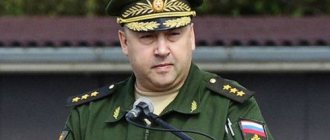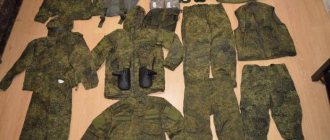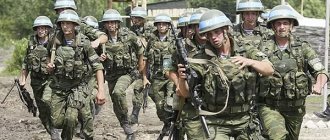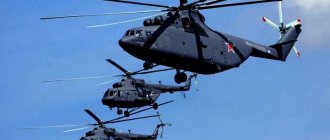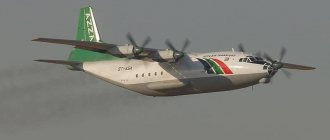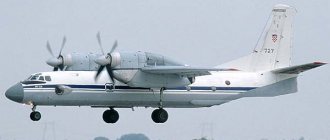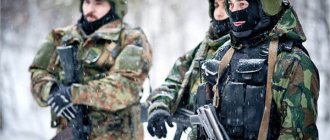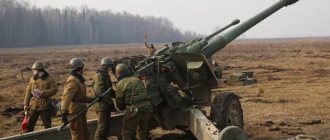The history of the military uniform of the Russian Air Force goes back to Tsarist Russia. Over the century of its existence, the form has changed many times almost beyond recognition. The main historical guidelines in the formation of modern Air Force uniforms are as follows:
- 1910 - formation of the Air Force of the Russian Empire;
- 1918 - creation of the air force of the Russian Soviet Republic;
- 1939 – 1945 - The Great Patriotic War;
- 1945-1990s – Cold War;
- 1992 – reform of the Russian Armed Forces;
- 2009 – introduction of the form created by V. Yudashkin;
- 2013 – Russian Defense Minister S. Shoigu introduced a new Air Force uniform.
Uniforms of the SV, Air Force and Airborne Forces
The new uniform is comfortable and practical, just what the 21st century army needs. Let's see what she looks like and learn more about her! So, military uniform : photo!
Sleeve patches are worn on a woolen tunic, woolen jacket, flannel, on casual jackets, on winter and demi-season jackets.
Sleeve patches are not worn on summer woolen jackets and windproof suits, or on shirts.
Chest patches are worn on casual jackets.
Summer uniform of the SV, Air Force and Airborne Forces
The casual summer uniform includes blue or protective caps , tunics and trousers , protective or blue shirts , a black tie with gold fastening, a khaki belt (for the formation, black shoes . The second version of the summer casual uniform involves a protective or blue cap and suit ( jacket and trousers , a T-shirt of the same colors, black shoes .
The everyday summer uniform of cadets, petty officers, sergeants and soldiers includes camouflage caps , suits , underwear, black socks and combat boots . It is allowed to wear berets , a vest ( airborne forces and special forces), a khaki belt (for formations.
Casual
Front door
The ceremonial summer uniform includes a blue woolen cap, jacket and trousers , a white shirt, a black tie with a gold tack, a ceremonial golden belt (for formation, black shoes .
The dress summer uniform of cadets, sergeants, sergeants and soldiers includes protective or blue caps , suits ( jacket and trousers , T-shirts , as well as black socks and shoes . It is allowed to wear shirts with trousers.
Winter uniform of the SV, Air Force and Airborne Forces
The winter casual uniform includes a fur earflap, protective or blue jackets , tunics, trousers , mufflers and shirts , a black tie with a gold tack, a khaki-colored belt (for the formation, black shoes , black gloves . Senior officers and colonels wear an astrakhan hat with visor. The second version of the winter uniform involves earflaps, protective or blue suits ( jacket and trousers , T-shirts and mufflers, a khaki belt (for formation), black shoes , black gloves . Officers and warrant officers are also allowed to wear a black fur hat with a visor and a black jacket (only for senior officers out of formation, a woolen cap, a casual cap, a casual cap, woolen berets , a vest ( airborne forces and special forces with chevrons, a demi-season jacket, a shirt with trousers.
The everyday winter uniform of cadets, sergeants, sergeants and soldiers includes camouflage earflaps, insulated jackets and trousers , demi-season suits , underwear (lightweight or fleece, khaki scarf , black socks , boots and gloves . It is allowed to wear berets , balaclava, fleece jacket, windbreaker, windproof suit , insulated vest , insulated mittens, khaki belt (for construction.
Casual
Front door
The winter dress uniform includes a gray fur earflap, blue wool trousers and tunic or jacket, a white shirt, a black tie with a gold tack, a white muffler, a ceremonial golden belt (for formations), black shoes and black gloves . The jacket may have a khaki color. The highest officers and colonels wear an astrakhan hat with a visor. In full dress uniform, officers and warrant officers can wear a black fur hat with a visor and a black leather jacket (only for senior officers out of formation, a blue woolen cap, woolen berets , a vest and high boots ( airborne forces and special forces, a khaki jacket, gray jacket (only for high-ranking officers out of formation, white gloves .
The ceremonial winter uniform of cadets, sergeants, sergeants and soldiers includes gray ear flaps, protective or blue demi-season jackets , suits ( jacket and trousers , T-shirts , mufflers, khaki belt (for formations), as well as black socks , shoes and gloves . So It is also permitted to wear caps , berets , shirts with trousers, and a vest ( airborne forces and special forces.
Dembel uniform
The tradition of leaving for demobilization in a special uniform dates back to the times of the Soviet Union. This form was prepared in advance, six months in advance. Now you can order it on certain websites on the Internet. The uniform is decorated with all sorts of additions, such as aiguillettes, insignia, and rivets. There is also a demobilization version of the VKS uniform; it has its own characteristics. Any demobilization is of two types, strict and exclusive. The difference between them is the degree of finishing with various accessories.
Find out: Who is entitled to the medal of a participant in hostilities in the North Caucasus
The demobilization form of the VKS may include the following details:
- field uniform tunic with blue velvet shoulder straps and collar pads;
- blue chevrons indicating affiliation with the Aerospace Forces;
- blue beret;
- insignia characteristic of this branch of the military;
- aiguillette;
- VKS vest.
You can make this form yourself, but to do this you will have to find tools and blue velvet, which can be bought at the military store. Chevrons are purchased there, but the most important condition is wearing a demobilization uniform; they put it on on the last day before demobilization and go home in it. It must be perfectly selected and fit flawlessly. It is important that it is preserved until you leave the unit.
It is especially difficult to ensure the safety of the form if it is very different from the statutory version. Therefore, it is better to place an order before sending it home. In any case, a soldier who has served his assigned term has something to be proud of and he can safely dress like that to appear in front of his family.
Author's rating
Author of the article
Vitaly Ryabov
I have conscription service behind me, and then contract service. Now retired.
Articles written
241
Navy uniform
of the Navy is highlighted in a separate section , diverse and subject to its own laws.
Navy summer uniform
Casual
Front door
The summer dress uniform of naval and midshipmen has three options. 1. White cap , jacket, trousers , shirt , black tie with gold tack, golden belt (for formation, black socks and white low shoes . 2. White cap , jacket, shirt , black trousers , black tie with gold tack, golden belt ( for formation, black socks and black low shoes . 3. Black cap , jacket, trousers , white shirt , black tie with gold bartack, golden belt (for formation, black socks and black low shoes , boots or boots . 1. Black cap , demi-season jacket , jacket, trousers , white shirt and muffler, black tie with gold bartack, golden belt (for the formation, black socks and black low shoes , shoes or boots .
Navy winter uniform
Casual
Front door
The winter dress uniform of naval officers and midshipmen has two options. 1. Black cap , demi-season jacket , jacket, trousers , white shirt and muffler, black tie with gold bartack, golden belt (for formation, black socks and black low shoes , boots or boots . 2. Black earflaps, jacket , jacket, trousers , white shirt and muffler, black tie with gold tack, golden belt (for formation, black socks and black low shoes , boots or boots . It is allowed to wear a black fur hat with a leather jacket (only senior officers out of formation, a white cap for the first winter uniform, demi-season jacket, white gloves .
Female military uniform
Separate models were developed for the fair half of our army. The new military uniform pleases not only with its practicality, but also with its aesthetics.
Summer uniform for female military personnel of the Army and Air Force
Casual
The summer casual women's uniform includes khaki or blue caps , jackets, skirts and blouses, a black tie with a gold tack, a khaki belt (for the formation), black shoes or boots . The second version of the uniform involves a khaki or blue cap, suit ( jacket and trousers) , T-shirt and black shoes skirts or trousers , berets , vests ( airborne forces and special forces.
Casual summer uniform (except for officers and warrant officers: camouflage caps , suits , khaki underwear, black socks and combat boots .
Front door
The summer dress uniform for women includes blue caps , jackets and skirts , white blouses, black ties with gold fasteners, a golden belt (for formation, black shoes or boots .
Dress summer uniform (except for officers and warrant officers: protective or blue cap , suit ( jacket and trousers , T-shirt , black shoes or boots .
Winter uniform of female military personnel of the Army and Air Force
Casual
The winter casual women's uniform includes a gray earflap, protective or blue winter jackets , mufflers, jackets, skirts and blouses, a black tie with gold fastening, a khaki belt (for the formation, black boots or shoes , black gloves . The second version of the uniform assumes a gray earflaps, protective or blue suits ( trousers and jacket , T-shirts and mufflers, khaki-colored belt (for formations, black boots or shoes , black gloves ). Senior officers and colonels wear an astrakhan fur hat with a visor. It is allowed to wear a black fur hat with a leather jacket ( only for senior officers out of formation, caps , berets, vests ( airborne forces and special forces, demi-season jackets , trousers , shirts with trousers, skirts .
Casual summer uniform (except for officers and warrant officers: camouflage earflaps, insulated jackets and trousers , demi-season suits , lightweight or fleece underwear, khaki scarf , black socks , boots and gloves . It is allowed to wear earflaps, berets , balaclava, fleece jacket, windbreaker, windproof suit , insulated vest , vest ( airborne and special forces), insulated mittens, khaki belt (for formation.
Front door
Women's winter dress uniform includes gray ear flaps, protective or blue winter jackets , blue jackets and skirts , white blouses, black ties with gold clasps, white mufflers, golden belts (for formations, black boots or boots , black gloves . Senior officers and Colonels wear astrakhan hats berets , vests ( airborne and special forces, a demi-season jacket, white gloves .
Dress summer uniform (except for officers and warrant officers: gray earflaps, protective or blue jacket , suit ( trousers and jacket , T-shirts and mufflers, khaki belt (for formations, black boots or boots , black gloves ).
Summer uniform of female military personnel of the Navy
Casual
Front door
Winter uniform of female military personnel of the Navy
Front door
Casual
Uniforms of the Air Force of the Russian Empire
1914
this year special uniforms for aviators were introduced
Russian military aviation dates back to 1910. Then, the first aircraft appeared in some engineering units. There was no separate equipment for pilots. They wore slightly modified infantry uniforms made of black cloth. Special uniforms for aviators were introduced in 1914.
Military uniform of the Russian Air Force, photo of the 1914 model.
The daily uniform of the Air Force consisted of a jacket and light brown riding breeches. Pilots went on combat missions in winter wearing leather jackets with a fur collar.
See also the article German uniform and its history
There were two types of uniforms - ceremonial and non-combatant.
In different cases, the headgear was a cap, a cap - a lightweight replica of a dragoon cap, and a leather helmet. Officers were required to wear a saber with their ceremonial uniform.
Helmet of a Russian military aviator.
Field uniform
Summer field uniform: camouflage cap , suit , khaki-colored lightweight underwear, black socks and combat boots .
Winter field uniform: camouflage earflaps, insulated jackets and trousers , demi-season suit , lightweight or fleece underwear, khaki scarf , black socks , boots and gloves .
When in field uniform, it is allowed to wear: a gray astrakhan hat, a black fur hat, a gray earflap, berets , a khaki-colored balaclava, a khaki-colored fleece jacket, a camouflage windbreaker, a windproof suit insulated vest , a vest ( airborne and special forces, insulated camouflage mittens, a protective belt colors (for building.
Ceremonial uniform
Chevrons The Russian Federation has its own history and symbolism. Over the years, the shape of the chevrons of the RF Armed Forces has changed, but the same emblems are used on them, and sometimes additions are made. In this article we will talk in detail about the emblems of the army, tell you where certain symbols came from, and how they are currently used.
chevron actually refers only to carbon braided stripes , in colloquial speech this is the name for any military stripes . In accordance with Order 300 dated June 22, 2015, new chevrons are made rectangular in shape, the emblems of the military branches are placed at the bottom of the chevron. The sleeve chevrons of the Russian Army complement the breastplates and lapel insignia.
Air Force uniform from Yudashkin
In 2007, the government allocated 170 million rubles to create a new model of military uniform from Valentin Yudashkin. After two years of development, this form was adopted in 2009. But after existing for three years, in 2012, it was abolished by the decision of Defense Minister Sergei Shoigu. According to his newest project, the uniform of all branches of the military will be similar to the uniform of the Ministry of Emergency Situations employees.
New chevrons of the Russian Armed Forces
chevrons are a shield, the upper part of which is occupied by the Russian tricolor, and the lower part contains the emblem. The shapes of the new chevrons on the right sleeve remained free. The emblem of your unit can be in the form of a circle, or in the form of a shield, or in the form of a “tulip”.
The size of the new chevrons is 85*100 mm. The chevron is embroidered on a rectangular piece of khaki, blue or black cloth. The main part of the chevron is made in the form of a shield, the outline of which is made in red, blue, yellow or white. At the top of the shield there is a tricolor, at the bottom there is the emblem of the Defense Ministry or military branches.
| The new-style sleeve insignia of the RF Armed Forces is a golden double-headed eagle holding a sword - a symbol of military valor, and a laurel wreath - a symbol of numerous victories. The emblem of the Armed Forces of the Russian Federation was approved by Decree of the President of the Russian Federation of January 27, 1997 No. 46. Interestingly, for the first time an eagle with a laurel wreath in its paw was introduced by Alexander I as the coat of arms of the Russian Empire and was supposed to symbolize the victory over Napoleon. However, Nicholas I canceled this innovation, returning the old coat of arms with the state. The new MO chevron is made on khaki cloth with yellow edging. For ceremonial chevrons, you can use gold threads instead of yellow ones. |
| A new type of sleeve insignia indicating affiliation with the Ministry of Defense. The emblem of the Ministry of Defense is the same as the emblem of the Armed Forces, but is made in silver colors. The emblem of the RF Ministry of Defense was approved by Decree of the President of the Russian Federation of July 21, 2003 No. 821. By the way, the emblem of the Moscow Region still differs from the emblem of the Armed Forces not only in color. If you look closely, the wreath that the silver eagle holds is oak, whereas on the emblem of the Armed Forces we see laurel. Why is that? Oak symbolizes power, strength, dignity. The new chevron is made on khaki cloth with white or red edging. For formal occasions, you can use silver threads instead of white ones. |
| A new type of sleeve insignia indicating membership in the General Staff of the RF Armed Forces. The helmet speaks of the continuity of traditions, and the marshal's baton in the paws of an eagle speaks of the leading role of the Headquarters in military operations. The emblem was approved by order of the Minister of Defense of the Russian Federation dated December 31, 2004 No. 464. The new pattern of the General Staff chevron is made on khaki cloth with a yellow or red edging. For formal occasions, you can use gold threads instead of yellow ones. |
| A sleeve insignia about belonging to the Rear Armed Forces of the Russian Federation of a new type. The Halberd - an ancient Russian weapon - speaks of the continuity of traditions. And in history, the halberd is a distinctive sign of company captains, that is, the officer who was responsible for issuing weapons, provisions, and supplies. This symbol speaks of the task of the Home Front to supply the army with everything necessary. The emblem was approved by order of the Minister of Defense of the Russian Federation dated December 31, 2004 No. 463. The new chevron is made on khaki cloth with a yellow or red edging. For formal occasions, you can use gold threads instead of yellow ones. |
| New Army Army sleeve insignia The sword is the infantryman's weapon, and the flaming grenade is a symbol of valor. The emblem was approved by order of the Minister of Defense of the Russian Federation dated December 30, 2001 No. 540. New chevrons of the Ground Forces are made on khaki cloth with a red edging. For formal occasions, you can use metallic red and gold threads instead of the usual ones. |
| The sleeve insignia of the Air Force of the new model Helicopter propeller is eloquent and without any interpretation. We also see an anti-aircraft gun - a symbol of the protection of important objects of the country. The emblem was approved by order of the Minister of Defense of the Russian Federation dated August 13, 2004 No. 240. The new chevron is made on blue cloth with a blue edging. For formal occasions, you can use metallic blue and gold threads instead of the usual ones. |
| New pattern Navy sleeve insignia Crossed anchors are an old symbol of the Navy. The emblem was approved by order of the Minister of Defense of the Russian Federation dated October 15, 1999 No. 475. The new chevrons are made on black cloth with yellow edging. For formal occasions, you can use gold threads instead of the usual yellow ones. |
| The sleeve insignia of the Space Defense Forces of the new Molniya model speaks of speed; the baton contains a stylized image of a rocket. The emblem was approved by order of the Minister of Defense of the Russian Federation dated March 19, 2002 No. 125. The new chevron is made on khaki cloth with a blue edging. For formal occasions, you can use metallic blue and gold threads instead of the usual ones. |
| The new Airborne Forces sleeve insignia, Burning Grenada, symbolizes courage and excellent training. The wings of a grenada speak of speed and responsiveness. The emblem was approved by order of the Minister of Defense of the Russian Federation dated May 6, 2005 No. 182. The new chevron is made on blue cloth with a blue edging. For formal occasions, you can use metallic blue and gold threads instead of the usual ones. |
Air Force uniform at the beginning of the 20th century
The Russian Air Force was formed on August 18, 1910, initially its composition was small. In the Russian Empire, in the early days of the development of the military branch, aviators were responsible for the competent use of balloons, from which artillery fire was adjusted.
The military also carried out reconnaissance missions, rising to great heights. The command of those times quickly realized the importance of the Air Force in combat operations and soon, in 1912, the formation of a separate air fleet began.
Their first uniform was an almost complete copy of the uniform of engineers of Imperial Russia in 1914.
From the day of its formation, the Air Force was classified as a separate element of the engineering forces. The ceremonial jacket is black cloth with silver buttons.
The air force was structured in squads, and aviators wore brown uniforms when performing routine missions. To avoid confusion when determining under whose command a soldier was serving, Roman numerals corresponding to the squad number were sewn on the lapels. In the summer, aviators wore light canvas jackets.
The open cockpit of the aircraft of those times meant the use of warm clothing to perform combat and combat training missions. Therefore, a leather jacket was added to the pilots’ wardrobe.
Chevrons of the Russian Army: emblems of the Armed Forces
chevrons can depict the most important signs for the army. The State Emblem of the Russian Federation is present in one form or another in all ceremonial emblems and in many small ones. These emblems are sewn onto the right sleeve.
| The emblem of the Armed Forces of the Russian Federation depicts a golden double-headed eagle. In its right paw the eagle holds a sword - a symbol of masculinity and military power. In the eagle’s left paw there is a laurel wreath, which speaks of our many victories. The red shield with St. George the Victorious is crowned with the imperial crown: our troops are protected by this saint. A similar emblem of the Ministry of Defense is made in silver. | |
| The emblem of the Minister of Defense retains the same red shield with St. George, only instead of a double-headed eagle there are now two crossed six-fingers. Shestopyor is a type of mace, an ancient Russian bladed weapon. In heraldry, the six-wing symbolizes supremacy and military leadership, which is why it is often found on the emblems of the Russian Armed Forces. | |
| A beautiful emblem of the General Staff of the Armed Forces : a golden helmet against the background of a crossed sword and marshal’s baton. The helmet is the warrior's defensive equipment , and the sword is the offensive equipment : the marshal's baton symbolizes power and leadership. Taken together, these three symbols indicate that the General Staff directs defense and attack. |
Reform of Sergei Shoigu
Almost twenty years have passed since the beginning of Perestroika, the renewed Russian army has been equipped with uniforms developed back in the USSR. In 2007, A.E. Serdyukov, a purely civilian man, was appointed Minister of Defense.
The five years during which he led the department did not bring anything good to the army. Civilian officials who occupied leading positions in the ministry were remembered for their exorbitant greed and undertakings in the style of the unforgettable Baron Munchausen.
Such projects include the allocation of a 170 million tranche to clothing designer V. Yudashkin to create samples of new uniforms for the Armed Forces.
A.E. Serdyukov and V. Yudashkin present samples of new uniforms to the President of Russia.
The fashion designer successfully failed the military mission. In fact, it turned out that the uniform from the famous couturier did not help in any way to endure the hardships of military service, and the price of the sets turned out to be exorbitant. The new Russian Air Force uniform was elegant, but unsuitable for field conditions. Beautiful overcoats, for example, did not warm at all in the cold.
The situation changed in 2012, when the post of the dismissed Serdyukov was taken by the former head of the Ministry of Emergency Situations S.K. Shoigu.
2012
this year S.K. became the Minister of Defense of the Russian Federation. Shoigu
The reforms he initiated affected the entire life of the army - from the organizational and legal sphere to the everyday life of military personnel. Soon the troops received sets of modern uniforms.
The current uniform of a military aviation pilot is unified. Not only buttonholes or chevrons indicate that a soldier or officer belongs to a particular branch of the military, but also the color of the jacket: protective, black, blue. The cut is the same in all cases. The only difference in silhouette from the base model is the uniform of sailors and the camouflage of special forces military personnel.
Military uniform of the Russian Air Force of a new model.
Military personnel of the Aerospace Forces, like other branches of the military, are equipped with three types of uniforms.
The military uniform of the Russian Air Force can be:
- Field. The main type of uniform for privates, sergeants, and officers, intended for daily wear in any conditions;
- Front door. Worn to participate in ceremonial events, drill reviews by order of the commander;
- Office. The uniform of Russian pilots has been included in the list of uniforms for officers, generals, and civilian employees of the Defense Ministry.
Emblems of the main departments
The RF Headquarters chevrons
| State Department of Personnel of the Moscow Region . A gold five-pointed star superimposed on a four-pointed Star of St. George against a background of crossed shoulder straps. Four shoulder straps: senior, senior, junior officers and warrant officers - symbolize the direction of activity: personnel management. The Order of St. George symbolizes the task of rewarding personnel. | |
| State Administration of Educational Work of the Armed Forces . A silver helmet at the intersection of a golden pole and a torch, superimposed on a golden column with a capital. The torch is a symbol of the search for truth. The column with a capital symbolizes continuity in the field of sciences and arts. | |
| Main Directorate of Financial and Economic Management of the Moscow Region . A silver caduceus entwined with two snakes, on a crossed pole and sword, point down. At the heart of the coat of arms is the so-called rod of Mercury: the god and patron of trade. | |
| Main Military Medical Directorate of the Ministry of Defense . Golden “Hippocratic cup” with a golden snake and a golden pole with a falling aiguillette. The Hippocratic Cup has long symbolized doctors; aiguillette indicates a connection with the sun. | |
| Main Directorate for Combat Training of the Armed Forces . Golden ancient Russian helmet at the intersection of a torch and a sword. The Old Russian helmet testifies to the continuity of traditions. | |
| Main Armored Directorate of the Ministry of Defense . Golden flaming grenade on a silver cuirass against the backdrop of a six-feather and raised wings. Burning Grenada is on the emblems of the most trained Russian troops. It symbolizes vehicles and armored vehicles. Cuirass - protective armor, strength of defense. Wings - mobility and agility of troops. | |
| Main Missile and Artillery Directorate of the Ministry of Defense . Two crossed silver cannons above a silver pyramid of cannonballs. Cannons are a symbol of artillery; ancient cannons speak of the continuity of traditions. | |
| Main Operations Directorate of the General Staff . A golden six-piece with a flowing aiguillette against the background of a silver scroll of a map with red and blue arrows depicted. The map scroll symbolizes the planning of the use of the Russian Armed Forces, and the arrows on it symbolize the operational control of troops. The sign goes back to history, when commanders drew plans of operations on maps before battles. | |
| Main Organizational and Mobilization Directorate of the General Staff . A golden alarm bell against the background of a crossed pole and sword. The bell has long been used to signal alarm and raise militia. It symbolizes a call to arms. |
USSR Air Force uniform
In 1922, by order No. 322, the uniforms of employees of the Workers' and Peasants' Red Army were strictly defined. The order gave a clear description of the uniforms for each branch of the military. The order approved forty emblems of military branches and branches, two of which belonged to the air force.
In those days, aviation was not allocated to a separate unit of the Armed Forces of the Soviet Union, but was a branch of the Red Army . In 1924, the color of the military aviators' uniform was changed to blue . The basic uniform differed little from the uniform of the ground forces. The only difference was the color of the buttonholes and piping - they were blue. the shoulder straps became blue .
In 1935, Soviet pilots received new buttonholes with a gold field and black piping for political workers, soldiers and junior officers, and blue for officers. On the buttonholes there were insignia - enamel red diamonds, rectangles, squares and rectangles (introduced into use in 1924) and the aviation emblem - a winged propeller.
Also in 1935, gold and red chevrons . Initially, gold chevrons were intended for generals, and red ones for officers. But in 1940, there was a change in the uniform regulations, as a result of which generals began to wear one wide gold color, emphasized by a red stripe at the bottom. A gold star was placed on top of such a chevron. Officers received chevrons of red and gold stripes.
Chevrons of the military branches
The chevrons of the military branches allow you to determine who is in front of you: a sailor or an infantryman, a missileman or a paratrooper. We remind you that we can embroider any chevrons of the military branches.
These chevrons and stripes of the Russian Army are worn on the right sleeve.
| Ground troops . Golden flaming grenada against the background of two crossed swords. Burning Grenada is a fighting force. Swords are a symbol of armed struggle. For more details, see the article about infantry chevrons . | |
| Signal Corps . Golden vertical lightning bolts, three up, three down, against the background of outstretched wings. Lightning is a historical symbol of the Signal Corps. A variety of types of communication and the ability to transmit information at lightning speed. Wings are a symbol of speed and speed. | |
| Radiation, chemical and biological defense troops . An outline gold regular hexagon with three diverging rays of gold color, in the lower part there are four intersecting red rings. | |
| Rocket Forces and Artillery . Two golden crossed gun barrels. The guns are a historical symbol of artillery. These chevrons symbolize the continuity of military traditions. | |
| Military air defense . Three golden crossed arrows intersect with the barrel of an anti-aircraft gun. The arrow is a symbol of determination and inflexibility. This is a purposeful order of air defense activities. An anti-aircraft gun is a symbol of strength, valor and courage. | |
| Air Force . A silver propeller intersects with an anti-aircraft gun against a backdrop of silver soaring wings. | |
| Navy . A golden double-headed eagle with outstretched wings, holding in its paws two silver Admiralty anchors crossed behind its back. These chevrons of the Russian army are usually made on black cloth. | |
| Strategic Missile Forces . A golden round shield with an ornament and eight rivets on a golden sword and diagonally crossed arrows. | |
| Airborne troops . Golden flaming grenade with wings. | |
| Space Forces . A stylized contour image of a launching space rocket against the background of a stylized globe with a tricolor. The rocket symbolizes our achievements in space exploration. Dark blue means the Universe, white space, blue means air, red means Earth. Our rocket takes off from the Earth and opens the Universe through the air through space. These are the youngest chevrons of the Russian troops. |
District chevrons
The emblems of military districts are very beautiful and are a source of pride. to distinguish the chevrons of the districts from each other: now we will tell you everything! You can also order chevrons from us. chevrons are worn on the left sleeve.
| Moscow Military District . hat against the background of a crossed gold scepter and sword on a red background in a contoured gold pentagonal fortification, angled upward. Monomakh's hat is an ancient symbol of royal power. Symbolizes the leadership position of Moscow in relation to other cities. | |
| Leningrad Military District . A golden scepter against a background of two crossed silver anchors on a white background in a golden contour pentagonal fortification, angled upward. Anchors are a symbol of the fact that the Leningrad District is especially strong in the fleet and is the founder of the fleet. | |
| North Caucasus Military District . “Caucasian cross” on a blue background in a golden contour pentagonal fortification, angled downwards and rising from its upper part of Mount Elbrus. | |
| Volga-Ural Military District . The silver sign “Europe-Asia” against the backdrop of the golden Ural Mountains, framed by silver blades of European and Asian edged weapons on a red background in a contoured gold pentagonal fortification, facing downwards. | |
| Siberian Military District . The crown of the Siberian Khanate against the background of crossed silver arrows, pointing downwards, and an ax on a red background in a contoured golden pentagonal fortification, facing downwards. | |
| Far Eastern Military District . Heraldic shield of the city of Khabarovsk, framed by a golden oak wreath of oval shape. |
Attention! In 2010, a reform of military districts was carried out. The Moscow and Leningrad districts were combined into one: Western. The North Caucasian Military District and part of the Volga-Ural Military District became the Southern Military District. The remaining part of the Volga-Ural Military District and part of the Siberian Military District are now called Central. The eastern part of the Siberian district and the Far Eastern district formed the last, fourth, district - Eastern.

